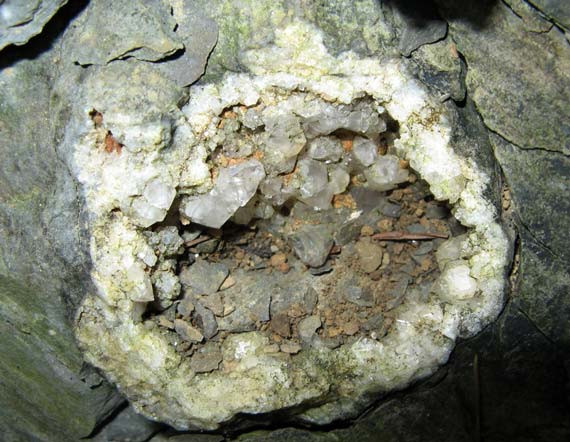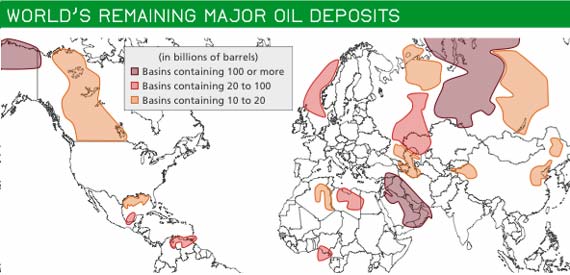
Here’s another Michigan park, Fayette.
Here’re US home values, adjusted for inflation over time, in a graph from the NY Times meant to to indicate that since the late ’90s, they’ve risen precipitously. But, in Tufte-eque terms, this is misleading. While strictly speaking, the plot is probably correct, what it’s meant to convey—that we’re in a huge real estate bubble—would be attenuated if these data were plotted against household income or something similar. In other words, the cost of a home is one thing, but the dent it makes in the household income is something different. Also, if you took out one or a very few markets (e.g., NY itself), I suspect the average home cost over the last few years, and even previously in the century, might not have increased so dramatically….
BTW, can we consider these kinds of statistics just a window in time, for better or worse?
Posted at 10:22 PM |
Comments Off on Ah, statistics…

I IMed jcb something about algorithms (don’t ask!) and he responded inquiring about Al Gore rhythms, but I know he hasn’t seen the movie yet….
Posted at 6:58 PM |
4 Comments »

So, checking my (Mexican Spanish) dictionary, I find this word “plomero�? is �?Amer.�? for plumber, which is what I remember from signs south of the border. In Spain, I guess it means “leader,�? referring to the metal, not your order walking on the trail…. Anyway, this is the new kitchen faucet El plomero installed. Fine! Fancy! And, yes, it does stream or spray, and pulls out about 70 cm! Whew! You can make a BIG mess with that!
Posted at 8:28 PM |
4 Comments »

All by itself, the word diacritical commands your attention. Then, when the scorn-bearing word marks is added, its impact intensifies. Thankfully, for those of us who forget our diacritical marks, Wikipedia has a detailed entry to jog our memories, along with separate entries on each of them. Remember caron? Cedilla? Ever learn ogonek? I missed that one. Now I know what those dots above mean, too!
Off to make goat cheese and lamb and spinach packets in filo aka phyllo dough….
BONUS: For a while I thought I might blahg on this comment by Niles Eldridge:
Some of my more naive colleagues insist that the “hypothetico-deductive method” is what sets science apart from all other domains of human experience. One frames a hypothesis—they never bother to explore where those come from, even though that’s the most interesting bit—and devises a test. If the test fails, the hypothesis is falsified; if the test “passes,” we can only say that the hypothesis is corroborated—or at least not falsified. The logic involved is exactly the same as anyone with any savvy at all brings to buying a used car.
Instead, I’ll just give you the link, if you’re interested. I agree with him, by the way: how did you get that idea after all? How much alcohol was involved? Did the germ of the idea arrive in a dream? “Interesting�? has quite a range, here….
Posted at 5:16 PM |
Comments Off on Say die-ah-critical

This is how SeedMagazine.com shows the future of the petroleum extraction in a recent (and downloadable) “crib sheet? I’m confused about why the continental US is white/blank/reserve-less, ’cause I’ve seen the pumps out there on the Great Plains and elsewhere (including Michigan!), plus the Canadian Plains blob just dies at the border—and I think extends into the northern Gulf of Mexico…. And, is it true there are no deposits across the southern globe?
Speaking of Edward Tufte-inspired graphics and statistics issues: if the blobs are changed to density per area ranks (instead of by the overall volume of each), how would the map change? Would the hot spots move?
The same cribsheet also claims that there’s new hybrid automotive technology out there called a steel v-belt continuously variable transmission that will supplant the current type(?s?), and be even more fuel-efficient. A quick Google, and I’m none the wiser, except that Chinese v-belt manufacturers have a significant web presence, and v-belts seem to be an extant technology. I’d still like to think Seed’s doing a good job of reporting, though….
Reminder: Get over and ask the neighbor how she likes her Prius!
While I’m at it, another Seed page has a Bill McKibben article from their April/May issue where his answers to the question “What constellation of forces might shake up the American political system enough to provoke real, deep change?” seem to be at odds with those I heard John Dean espouse in a interview regarding his new book Conservatives Without Conscience.
Dean told Keith Olbermann that the strong followers of authoritarian leaders constitute about 23% of Americans (didn’t say percent of voters or of adults). So, if we’re to combat the block they constitute we must understand how they behave. These are the folks for whom it is an emotional and not a logical issue to “hate liberals, Hillary Clinton, or their current topic/person—cultist behavior, in short.
Here’s a bit of what Dean wrote in the Boston Globe:
Authoritarian conservatives are, as a researcher told me, “enemies of freedom, antidemocratic, antiequality, highly prejudiced, mean-spirited, power hungry, Machiavellian and amoral.” And that’s not just his view. To the contrary, this is how these people have consistently described themselves when being anonymously tested, by the tens of thousands over the past several decades.
Authoritarianism’s impact on contemporary conservatism is beyond question. Because this impact is still growing and has troubling (if not actually evil) implications, I hope that social scientists will begin to write about this issue for general readers. It is long past time to bring the telling results of their empirical work into the public square and to the attention of American voters. No less than the health of our democracy may depend on this being done. We need to stop thinking we are dealing with traditional conservatives on the modern stage, and instead recognize that they’ve often been supplanted by authoritarians.
Vocabulary: disjecta membra, a plural noun meaning scattered fragments, especially of written work. Not to be confused with flotsam and jetsam, although in certain circumstances disjecta membra may resemble what Anne calls shambling mounds.
Enough from me. Your turn.
Posted at 4:17 PM |
2 Comments »

Interesting etymology for “stevedore.”? It’s a corruption of the Spanish “estivador”? meaning one who stows cargo. So, no shift in the meaning….
Is the most prominent stevedore in popular American culture Marlon Brando’s character, Terry Malloy, in On the Waterfront (1954—thank you imdb)?
I guess, at least for a while, my grandfather from the Old World, was a stevedore. Or some kind of dockworker, anyway. If I got the family story right!
—found this image on the internet. I wonder about the odors that accompanied this place. What might a Lard & Wool Dealers business smell like? Plus rotting flotsam and jetsam in the water…. Ick.
Oh, and happy 14th BRB!
Posted at 5:19 PM |
Comments Off on Stevedore (randomly)





